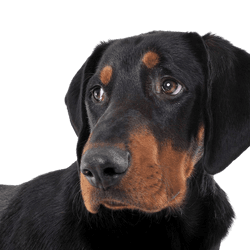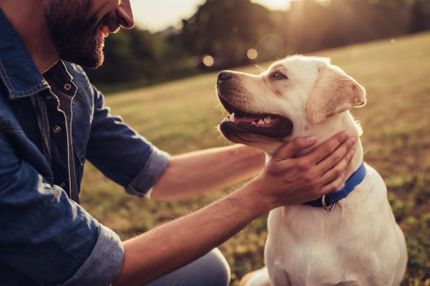Facts & Origin
What is a Eurohound?
The Eurohound, also known as the European sled dog, is a special breed that was developed primarily for sled racing. This dog breed was created by crossing speed hounds such as the Greyhound with Nordic sled dogs, typically the Siberian Husky. Eurohounds are known for their exceptional endurance and speed and are particularly suitable for medium to long distances.
Their coat tends to be short and easy to groom, and they are considered very trainable and energetic. Due to their versatility and pleasant temperament, they are also popular as family dogs.
History and origin
After the Second World War, skijoring and pulka dog sled races quickly gained popularity in Norway and other Scandinavian countries. These races required small, fast teams of 1 to 4 dogs competing on hilly courses of 15 to 30 kilometers. According to the Norwegian Dog Sled Racing Association, purebred dogs had to be used, with the German Shorthair proving to be the favorite. The 1970s saw the development of the "sled pointer", a pointing dog bred for sled pulling.
Towards the end of the decade, interest grew in the "Nome style" of sled racing, which involved long distances and overnight stays in extremely cold conditions. The first race in this style took place near Oslo in 1974. Norwegian mushers imported Alaskan huskies for this, especially after the purebred requirement was lifted in 1985.
This rule change allowed mushers to breed their best dogs regardless of breed. Mushers began crossing Alaskan Huskies with Sled Pointers and even Greyhounds to obtain efficient dogs for Nordic conditions. The "Eurohounds" became popular for their suitability in the Nordic winters and in dryland mushing disciplines such as bikejoring and canicross. The name "Eurohound" was coined to identify these specially bred European racing dogs.


| Alternate Name | European Sled Dog, Scandinavian Hound |
| Origin | - |
| Life expectancy | 10 - 13 years |
| Care requirements | low-maintenance |
| Activity level | high |
| FCI group | not recognised |
| AKC group | not recognised |
| KC group | not recognised |
Attitude, character and temperament of the breed
Character traits and temperament
The Eurohound is known for its intelligent, energetic and even-tempered personality. This breed is characterized by high trainability and a strong work ethic, making it a favorite for sled dog sports. Eurohounds are social and get along well with people and other dogs as long as they are properly socialized. Their friendly nature also makes them good family dogs, provided they receive enough mental and physical stimulation.
Despite their energy, they are often calm and relaxed at home as long as they get enough exercise on a regular basis. Eurohounds are very adaptable and can live well in a variety of environments as long as their needs for activity and companionship are met. Their speed and stamina make them excellent companions for active people.
Character
Usage
Health and breeding information
Health and typical diseases
The Eurohound is generally known as a robust and healthy breed, but like all dogs it can be prone to certain health problems. The most common conditions include joint problems such as hip dysplasia and elbow dysplasia, which can be more common in athletically active dogs. In addition, gastrointestinal disorders and skin problems are also not uncommon, especially in dogs that work or live in extreme weather conditions.
As a breed bred for high performance, Eurohounds can also be prone to overuse injuries. To minimize these risks, it is crucial that Eurohounds receive regular veterinary check-ups and a balanced diet as well as an adequate amount of rest between exercise sessions. Preventative measures and attentive grooming can help ensure the well-being of these active dogs.


What does a Eurohound look like?
The Eurohound is a lean and athletic crossbreed whose appearance combines the characteristics of a speed hound and a Nordic sled dog. They typically have a short to medium-length coat that is easy to groom and insulates them from the cold. Coat color can be varied, including black, white, gray or a mixture of these. Eurohounds are medium sized, reaching a weight of 20 to 30 kilograms and a shoulder height of about 60 to 70 centimeters.
Their lean bodies are optimized for endurance and speed, making them excellent long-distance runners. Their head is often narrow with a prominent muzzle, and their ears can be either drooping or erect. Their eyes are usually clear and expressive, which corresponds to their attentive nature. Overall, the Eurohound shows a harmonious balance between strength and elegance.
| Fur length | short |
| Fur | flat coated |
| Ear shape | Standing Ears |
| Tail | lang |
| Anatomy | sporty |
| Size ♀ | 60 - 70 cm |
| Weight ♀ | 20 - 30 kg |
| Size ♂ | 60 - 72 cm |
| Weight ♂ | 20 - 34 kg |
| Suitable For | - |
Known Diseases
Hip dysplasia (HD)
Hip dysplasia (HD) is a genetic condition in dogs where the hip joint is not shaped properly. This leads to pain, stiffness and restricted movement.
Elbow dysplasia (ED)
Elbow joint dysplasia is a chronic disease complex of the elbow joint of fast growing dog breeds.
FAQ
-
The Eurohound is a cross between a Nordic sled dog, usually a Siberian Husky, and a speed dog such as a Greyhound or Pointer. It is mainly bred for dog sled races.
-
Eurohounds are ideal for various sled dog sports such as skijoring, pulka and long-distance racing. They are also suitable for modern sports such as canicross and bikejoring.
-
Eurohounds are intelligent, energetic and very trainable. They are social and friendly towards people and other dogs, but require appropriate socialization.
-
Eurohounds reach a shoulder height of around 60 to 70 centimeters and weigh between 20 and 30 kilograms.
-
They have a short to medium-length coat that is relatively easy to care for. Regular brushing and occasional bathing are enough to keep their coat in good condition.
-
Eurohounds have an average life expectancy of around 10 to 14 years.
















